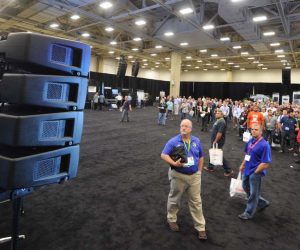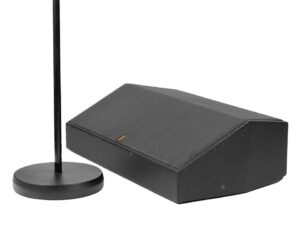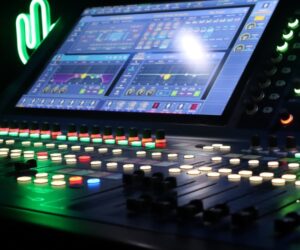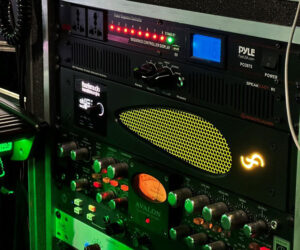While line arrays get much of the press, the real workhorses of pro audio are traditional 2-way loudspeakers.
They remain invaluable for a range of very good reasons, with versatility that translates to “great bang for the buck” topping the list. A quick check of manufacturer websites bears this out, where information on dozens of 2-way models are just a few clicks away.
Available in a wide range of sizes and cabinet shapes, they can serve as mains, side fills, center fills, near fills, front fills, and delays, and can quickly be ground stacked, flown, or placed on a stand. They can be used by themselves or with subwoofers in applications requiring additional low-end reinforcement.
Many (most) of these boxes are trapezoidal in shape, with some able to be put into tightly packed horizontal arrays and others better suited for “exploded” clusters. Still others can be stacked or flown into line and/or column arrays. Several offer a modified cabinet shape that also allow them to be placed on their side and used as floor monitors.
Smaller 2-way boxes incorporate a single 8- or 10-inch woofers, but the most popular models offer 12- or 15-inch woofers for additional low end performance. Usually the woofers are accompanied by a compression driver on a horn or waveguide for mid and high frequencies, although ribbon drivers have also emerged as a viable option from certain companies.
A few models even incorporate more than one woofer. And let’s also not overlook coaxial models where the individual driver units radiate sound from the same point/axis, which, when designed properly, can offer enhanced coherence as well as a smaller enclosure size.
When evaluating conventional loudspeakers, start by defining the right box for the job – size, scale, mounting, portability, and so on. It all depends on the requirements of the application(s). Our tour of recent models that follows is intended, by design, to present the “state of the market” in terms of options.
But for each type of model presented here, understand that there are several similar models from other sources, so further homework is strongly recommended. When making “apples to apples” comparisons, here are basic factors to consider:
—Dispersion, a measurement of the pattern of MF/HF sound that emanates from the box. This is stated in degrees for the horizontal and vertical planes.
—Power handling, which, for passive cabinets, is usually stated as an “RMS” or “continuous” rating in watts. An increasing number of these loudspeakers are now self-powered and also have onboard DSP.
—Sensitivity, stated in decibels (dB), is a measurement of the sound level the loudspeaker can produce with a given input signal, generally measured with 1 watt input at 1 meter distance. (By the way, we’re seeing an increasing number of manufacturers who prefer to provide a maximum SPL specification.)
—Mounting, which includes integrated flypoints as well as things like pole mounts that can come in quite handy for true portable applications.
Whether placed on a stand for a speech at a groundbreaking ceremony, stacked on top of subwoofers at the local music venue, or flown at a corporate event, the ubiquitous conventional 2-way loudspeaker gets the job done.
Enjoy our Real World Gear Photo Gallery look at a host of current models.




















